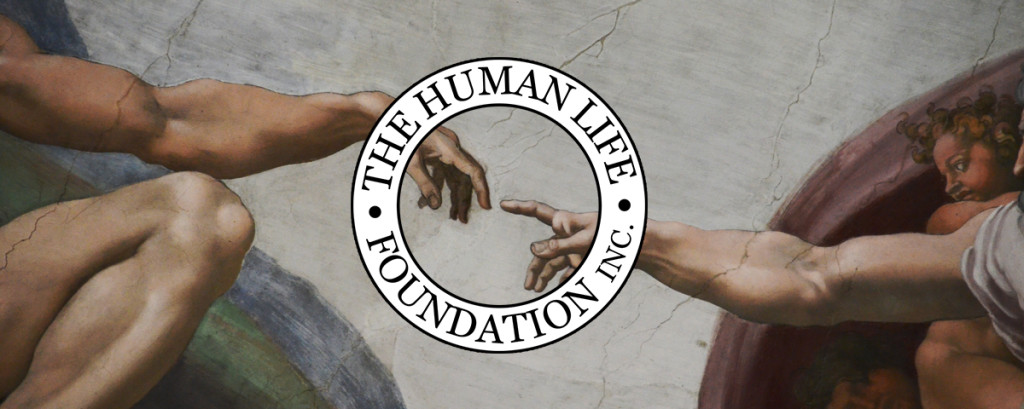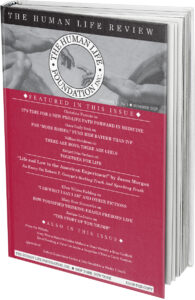From Icebergs to Waves: Navigating the Reproductive Rights Agenda Against Prolifers
In the summer of 2021, a 108-page report entitled “Tip of the Iceberg: Religious Extremist Funders Against Human Rights for Sexuality and Reproductive Health in Europe, 2009-2018” was published in Brussels. It was produced by the European Parliamentary Forum for Sexual and Reproductive Rights (EPF), a non-profit organization, registered in Belgium, consisting of a network of parliamentarians from across Europe and headed by Executive Director Neil Datta, a gay anti-life advocate who claims to have five nationalities.
The “Iceberg” report not only vilified prolifers but attempted to discredit pro-life organizations, especially those operating in Europe, by claiming that the 50 or so that it examined were financed by millionaires and received over $700 million between 2009 and 2018.
Fast forward to midyear 2025 when EPF published a similar report, this one with quite a few more pages (160), but a shorter title: “The Next Wave: How Religious Extremism is Regaining Power.” This report claims to expose “an alarming rise in funding for anti-rights and anti-gender movements across Europe.” EPF’s more recent calculations showed that some 275 organizations involved in “anti-gender initiatives in Europe” received funding equivalent to US$1.18 billion over the period 2019-2023.
Such a sum for a large group of organizations, however, is a drop in the bucket when compared with the influence of gigantic foundations and international organizations that support and collaborate with EPF. More later.
European Values?
The new report seems to carry even more virulent attacks on faith-based organizations and the success these continue to have in affirming the right to life and upholding human dignity globally. In the eyes of EPF, such organizations are opponents of reproductive rights and gender equality and thus, according to Datta, they are “against European values.”
Really? Since when do “reproductive rights” represent European values?
Reproductive rights are not enshrined anywhere in Europe nor internationally. Indeed, Datta and his EPF colleagues’ tenets are contrary to three pertinent documents relating to human rights: the Charter of Fundamental Rights of the European Union, adopted by EU members in Nice on December 7, 2000, the European Convention on Human Rights of the Council of Europe, which dates back to 1950, and the Universal Declaration of Human Rights of the United Nations, adopted December 10, 1948. The language about human life in all three is very clear.
The EU’s Charter, considered a “Solemn Proclamation” (as declared on its first page), starts out as follows:
Chapter 1 Dignity.
Article 1 Human Dignity. Human dignity is inviolable. It must be respected and protected.
Article 2 Right to life. No one shall be condemned to the death penalty. . . .
The words “right” or “rights” appear 101 times but never with “reproductive.” The latter does appear once, referring to “the prohibition of the reproductive cloning of human beings.”
The European Convention of Human Rights states:
Article 2, Right to life, 1. Everyone’s right to life shall be protected by law. No one shall be deprived of his life intentionally. . . .
The United Nation’s Universal Declaration, in Article 3, states:
Everyone has the right to life, liberty and security of person.
It would appear from these documents that the people and organizations who defend life are the ones whose beliefs are consonant with European and global values, not those who proclaim sexual and reproductive rights.
However, in April 2024, several anti-life members of the European Parliament submitted a resolution to include the right to abortion in the European Union’s Charter of Fundamental Rights, a measure that is unlikely to go anywhere due to the opposition it has already generated. Not all European countries would approve of such a move, notwithstanding France’s success in early 2024 to insert the right to abortion in its constitution.
The Finances of EPF
Given the “Wave” report’s lengthy examination of the finances of pro-life organizations, mainly by mining their annual reports, one might ask who funds EPF. The group’s website makes no reference to financial data. Its 2024 annual report is long on accomplishments but includes no financial tables. A section labeled “Finances” (page 28) expresses gratitude for their main donors:
EPF is grateful to its many partners (public and private) for their generous support of our common goals. In 2024, the United Nations Population Fund (UNFPA) was EPF’s main international public donor. From the philanthropic sector, the Bill and Melinda Gates Foundation continues to be the largest contributor to EPF’s activities. A few selected private companies, such as Organon and MSD, provide ongoing support for policy research and awareness-raising.
The same page poses this question: “How is EPF financed?” Next to the query is a small circle with this amount at the center: USD 3,006,039.55. Compared with their 2023 annual report, this represents a 26.5 percent increase. An interesting sidelight is that, as a European organization based in Belgium, EPF presented its one and only monetary figure in dollars rather than euros!
The following page of the 2024 report, labeled “Partnerships,” features the logos of some 47 organizations that are key actors in the sexual and reproductive rights world, starting with the billion-dollar International Planned Parenthood Federation (IPPF). Several UN agencies are signaled for their major contributions:
EPF acknowledges support and collaboration of the UNDP-UNFPA-UNICEF-WHO-World Bank Special Programme of Research, Development and Research Training in Human Reproduction (HRP), a cosponsored programme executed by the World Health Organization (WHO).
If pro-life organizations receive donations from millionaires, it should be noted that EPF is funded by billionaires, public and private. Besides the Gates Foundation, other funding partners listed include the Soros sponsored Open Society Foundations, the MacArthur Foundation, and the International Planned Parenthood Foundation, all of which are funders of the global reproductive rights agenda. However, no amounts are given.
The annual reports of EPF present a sharp contrast with those published by pro-life organizations. The latter contain a plethora of financial data, which EDF researchers used extensively to produce the “Wave” report. The difference in financial data transparency could not be starker.
In conclusion, the stridency of the recent EPF report in its attacks on pro-life organizations and their funding reveals a certain hypocrisy as well as a sense of desperation given that prolifers have prospered and extended their influence in the years between the “Iceberg” and “Wave” reports.
Moreover, we have hereby reminded EPF that the right to life—not reproductive rights/abortion—is the right that is clearly rooted in three major human rights documents.









